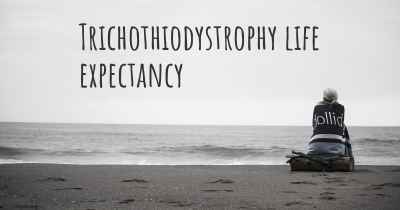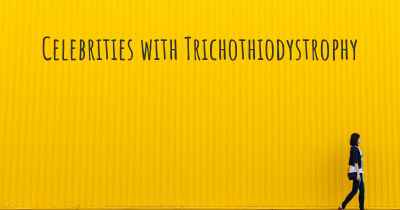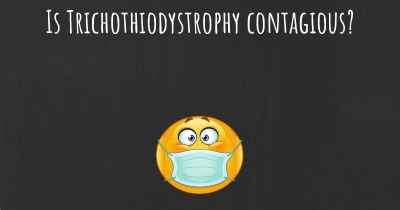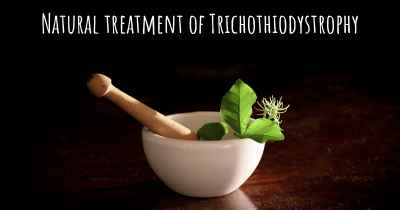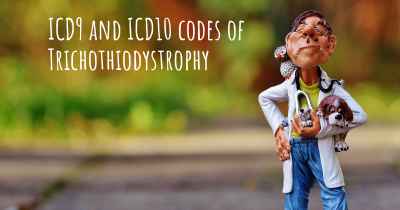Living with Trichothiodystrophy. How to live with Trichothiodystrophy?
Can you be happy living with Trichothiodystrophy? What do you have to do to be happy with Trichothiodystrophy? Living with Trichothiodystrophy can be difficult, but you have to fight to try to be happy. Have a look at things that other people have done to be happy with Trichothiodystrophy
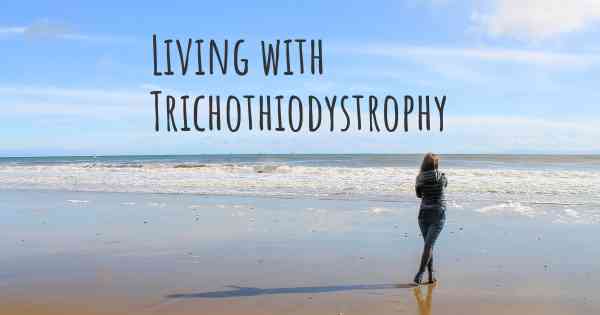
Living with Trichothiodystrophy
Trichothiodystrophy (TTD) is a rare genetic disorder that affects the hair, skin, and nails. It is characterized by brittle hair, intellectual disabilities, and various other physical abnormalities. Living with Trichothiodystrophy can present unique challenges, but with proper care and support, individuals with TTD can lead fulfilling lives.
Medical Management
One of the most important aspects of living with Trichothiodystrophy is proper medical management. It is crucial to work closely with a team of healthcare professionals, including dermatologists, geneticists, and neurologists, who specialize in rare genetic disorders. Regular check-ups and screenings can help monitor the progression of the condition and address any associated health concerns.
Skincare: Individuals with TTD often have dry and sensitive skin. It is essential to maintain a consistent skincare routine to keep the skin moisturized and protected. Using gentle cleansers, hypoallergenic moisturizers, and sunscreen can help minimize skin irritations and sun damage.
Hair Care: Brittle hair is a common characteristic of Trichothiodystrophy. It is important to handle the hair gently and avoid excessive brushing or styling that can cause breakage. Using mild shampoos, conditioners, and leave-in treatments specifically designed for fragile hair can help maintain its health and minimize damage.
Nail Care: Individuals with TTD may have brittle and ridged nails. Regular trimming and filing can help prevent nail breakage. Applying moisturizing nail creams and avoiding harsh chemicals can also contribute to nail health.
Emotional Support
Living with Trichothiodystrophy can have a significant impact on an individual's emotional well-being. It is essential to establish a strong support system to navigate the challenges that may arise.
Family and Friends: Surrounding yourself with understanding and supportive family members and friends can make a world of difference. Their love, encouragement, and empathy can provide emotional strength and help you cope with the difficulties associated with TTD.
Support Groups: Connecting with others who have Trichothiodystrophy or similar conditions can be immensely beneficial. Online support groups or local community organizations can provide a platform to share experiences, exchange advice, and find comfort in knowing that you are not alone in your journey.
Therapy: Seeking professional therapy or counseling can be helpful in managing the emotional impact of living with a rare genetic disorder. A therapist can provide guidance, coping strategies, and a safe space to express any concerns or frustrations you may have.
Education and Advocacy
Education and advocacy play a vital role in living with Trichothiodystrophy. By increasing awareness and understanding of the condition, you can help create a more inclusive and supportive environment.
Self-Education: Take the initiative to learn as much as you can about Trichothiodystrophy. Understanding the condition, its symptoms, and available treatments can empower you to make informed decisions about your healthcare and communicate effectively with your medical team.
Community Education: Share your knowledge and experiences with others to raise awareness about Trichothiodystrophy. This can be done through social media, local events, or by joining advocacy groups. By educating others, you can help dispel misconceptions and promote acceptance and support for individuals with TTD.
Support Research: Stay informed about ongoing research and clinical trials related to Trichothiodystrophy. Participating in research studies or supporting organizations dedicated to finding treatments or a cure can contribute to advancements in the field and provide hope for future generations.
Living a Fulfilling Life
While Trichothiodystrophy may present challenges, it does not define an individual's entire life. It is important to focus on personal growth, pursuing passions, and finding joy in everyday experiences.
Education and Career: With appropriate support and accommodations, individuals with TTD can pursue education and career goals. Identifying strengths and interests can help guide career choices that align with individual abilities and limitations.
Physical Activities: Engaging in physical activities that are suitable for your abilities can contribute to overall well-being. Consult with your healthcare team to identify safe and enjoyable activities that promote physical fitness and mental well-being.
Embracing Individuality: Trichothiodystrophy is a part of who you are, but it does not define your worth or potential. Embrace your individuality and focus on your unique strengths and qualities. Surround yourself with people who appreciate and celebrate your uniqueness.
Seeking Happiness: Despite the challenges, it is important to prioritize happiness and find joy in everyday life. Engage in activities that bring you happiness, spend time with loved ones, and cultivate a positive mindset.
Living with Trichothiodystrophy requires a multidimensional approach that encompasses medical management, emotional support, education, and personal growth. By taking proactive steps and seeking support, individuals with TTD can lead fulfilling lives and make a positive impact in their communities.
